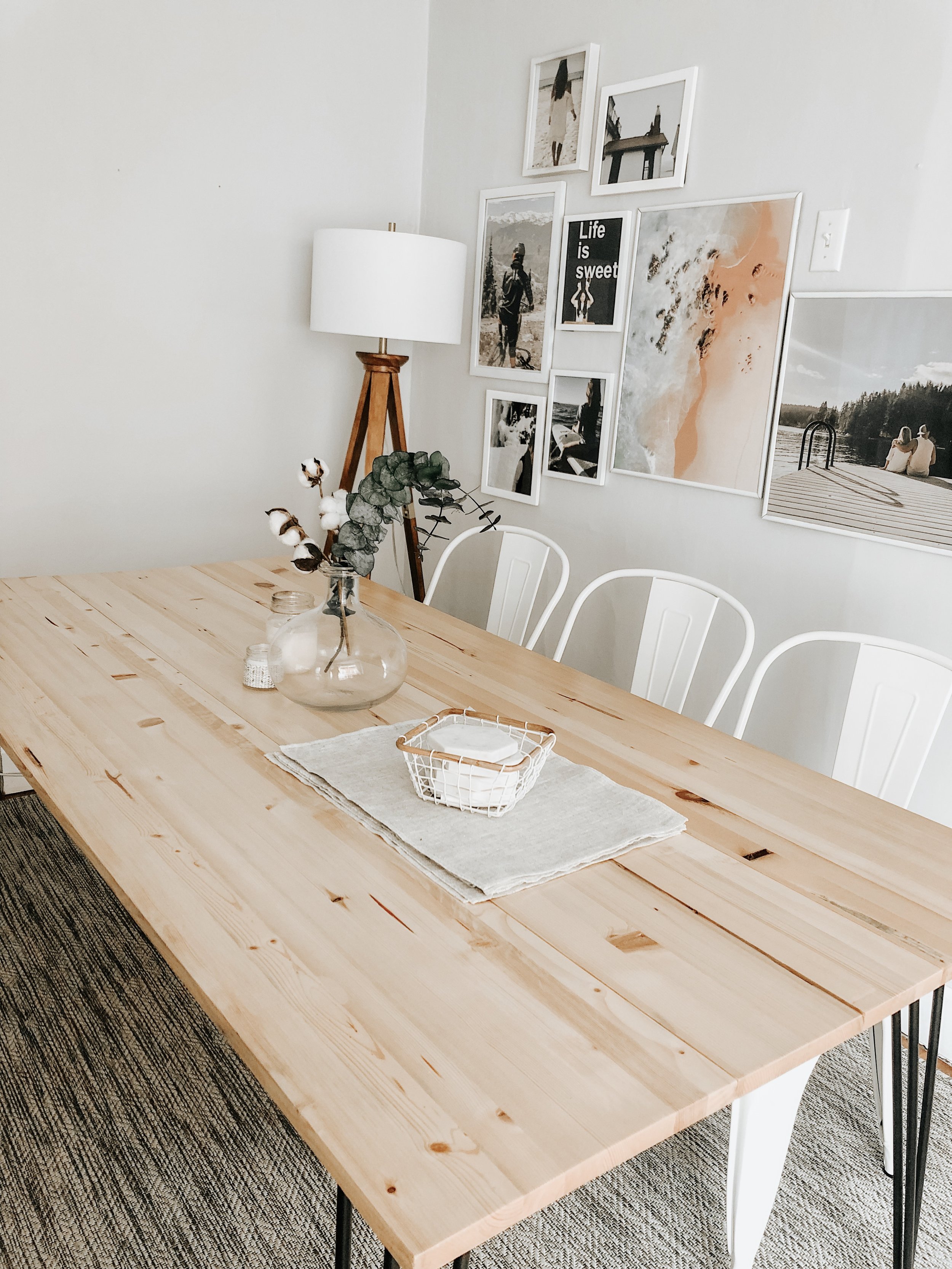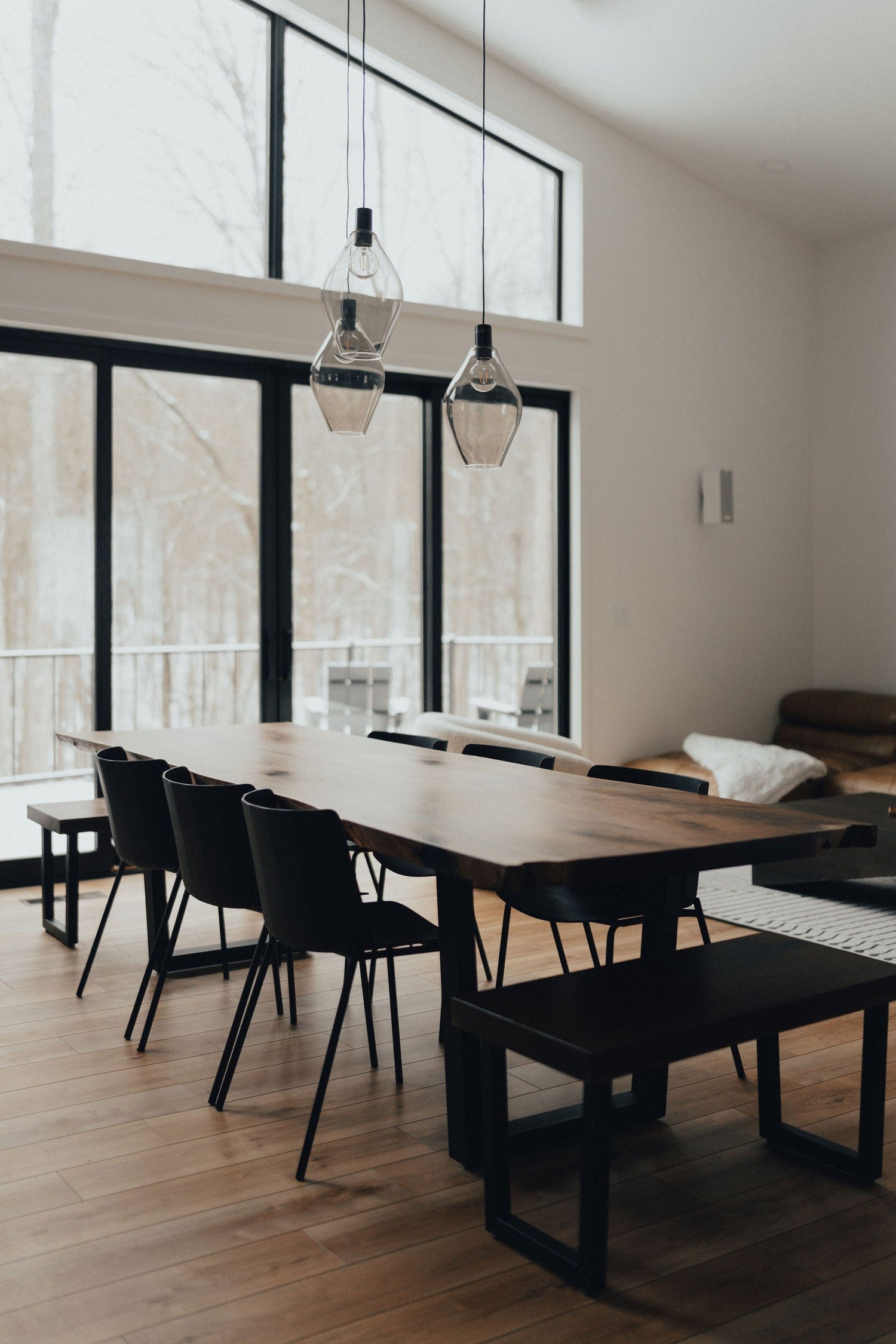Unique Dining Room Table Legs That Will Elevate Your Dining Area
From Typical to Modern: Locate the Suitable Dining-room Table Legs for Your Style
The selection of dining-room table legs plays a crucial function in specifying the total character of your space, connecting the gap in between conventional workmanship and contemporary visual appeals. While classic styles such as cabriole and turned legs evoke a feeling of ageless sophistication, modern designs like hairpin and geometric alternatives present a possibility for striking visual passion. Assessing the appropriate balance in between these designs needs a nuanced understanding of your existing decor and personal preference. As you consider these aspects, the inquiry remains: exactly how can you seamlessly integrate these varied leg designs to produce an unified dining experience?
Recognizing Table Leg Styles
The variety of dining-room table leg styles can considerably affect both the appearances and capability of the room. Each leg design adds special useful functions and visual elements, dealing with varied layout preferences and usage requirements. Understanding these designs is critical for picking the ideal eating table that lines up with your overall indoor layout vision.
As an example, tapered legs offer a tidy, traditional look that can enhance a room's beauty, while stand bases give stability and optimize legroom, making them suitable for smaller rooms. Barrette legs, a trademark of mid-century modern layout, introduce a commercial style, enabling a ventilated, open feel. Trestle legs evoke rustic appeal, offering durable support and a feeling of timelessness.
Wood legs can bring heat and texture, whereas metal alternatives frequently share a sleek, contemporary ambiance. Inevitably, understanding table leg styles is crucial for creating a cohesive eating location that mirrors personal style while making sure usefulness and convenience.
Conventional Table Leg Options
When choosing eating area table legs, traditional options commonly personify classic elegance and craftsmanship. These styles show a rich heritage and a commitment to quality, making them optimal for those that value timeless aesthetics.
One of the most renowned standard leg designs is the cabriole leg, defined by its stylish rounded form. This style commonly includes attractive makings and is most frequently discovered in Queen Anne and Chippendale furnishings. One more prominent choice is the turned leg, which boasts a collection of smooth, rounded forms that give a timeless appearance while preserving stability.
Moreover, the straight leg, while easy, uses a unadorned and strong framework that can mix perfectly with a range of tabletop styles. For those drawn to ornate outlining, claw-and-ball feet legs evoke a sense of splendour and can act as a spectacular prime focus in any dining room.
Last but not least, stand bases, although not purely legs, offer a different traditional choice that enables adequate legroom and can be wonderfully carved. Each of these standard leg styles adds to the general setting of a dining room, marrying feature with aesthetic charm.

Modern Table Leg Designs
Modern table leg layouts offer a diverse variety of styles that emphasize ingenious products and clean lines. These layouts usually prioritize performance while working as striking prime focus within a dining room. Minimalist aesthetic appeals are common, with legs crafted from products such as steel, glass, and engineered wood, which add to a modern and ventilated feeling.
One prominent layout is the barrette leg, characterized by its slim, tapered framework that supplies stability without frustrating the tabletop (dining room table legs). This design is often located in mid-century modern furniture and can easily complement Continue numerous dining table forms. One more fad is using geometric shapes, where legs may handle angular or asymmetrical types, including visual rate of interest and a touch of virtuosity

Blending Styles for Special Rooms
Commonly, house owners seek to develop distinct eating rooms that mirror their individual design by mixing different layout aspects. This strategy permits the incorporation of diverse aesthetics, causing an unified yet distinctive atmosphere. Matching a rustic wooden table with sleek, modern-day steel legs can produce a captivating contrast that raises the room's see this here overall allure.
Furthermore, integrating vintage table legs with modern table tops can stimulate a sense of background while keeping a contemporary sensibility. Such mixes not just showcase specific taste yet also urge creativity, permitting property owners to curate a room that feels both individual and welcoming.
Color plays a crucial function in this mixing process; choosing table legs that enhance or contrast with the existing color design can improve aesthetic interest. Whitewashed legs can soften the boldness of a dark table surface, developing a balanced aesthetic.
Tips for Selecting the Right Legs
Picking the right table legs is important for accomplishing both capability and aesthetic charm in your eating room. Begin by considering the overall style of your area. Traditional settings gain from legs that feature complex makings or transformed designs, while contemporary spaces may require streamlined, minimal designs.
Following, assess the height and stability of the legs. dining room table legs. Common eating tables vary in between 28 to 30 inches in elevation, so dig this ensure the legs complement this measurement for comfort. Furthermore, robust materials, such as hardwood or metal, can enhance stability and longevity
Assess the leg shape also-- choices include directly, tapered, or pedestal designs. Straight legs provide a classic appearance, while conical legs can add a touch of sophistication. Pedestal bases provide ample legroom and are perfect for smaller spaces.
Conclusion
In summary, selecting the perfect dining room table legs calls for mindful factor to consider of both contemporary and conventional styles. Typical alternatives such as cabriole and transformed legs provide classic beauty, while modern-day layouts like hairpin and geometric shapes supply a modern touch. By balancing leg style, elevation, and product with the general decoration, a natural and welcoming environment can be achieved. Inevitably, the picked table legs ought to reflect the wanted visual, enhancing the eating experience within the area.
The variety of eating room table leg designs can considerably affect both the appearances and performance of the room. Eventually, recognizing table leg styles is essential for producing a natural dining location that reflects personal design while ensuring functionality and convenience.One of the most renowned typical leg styles is the cabriole leg, defined by its elegant rounded form. Straight legs supply a traditional appearance, while conical legs can add a touch of sophistication.In recap, selecting the ideal eating room table legs calls for careful consideration of both typical and modern styles.